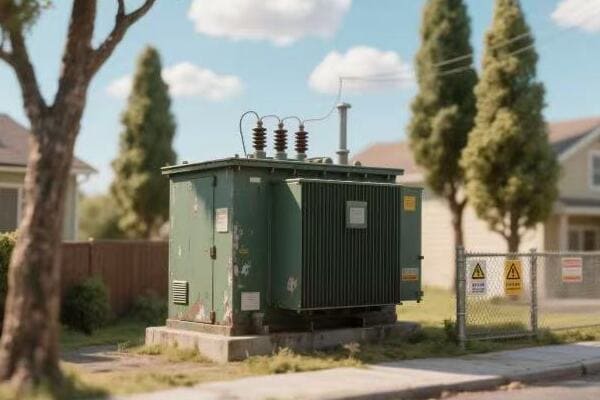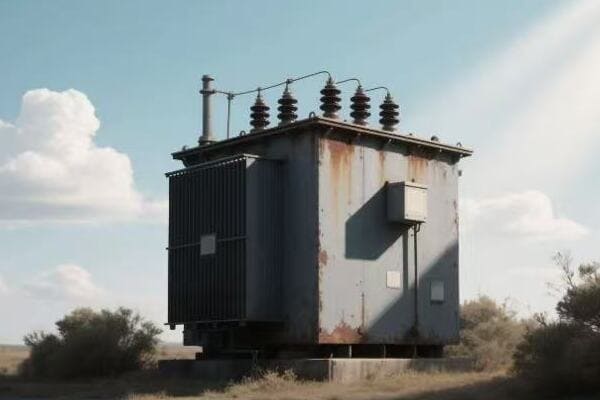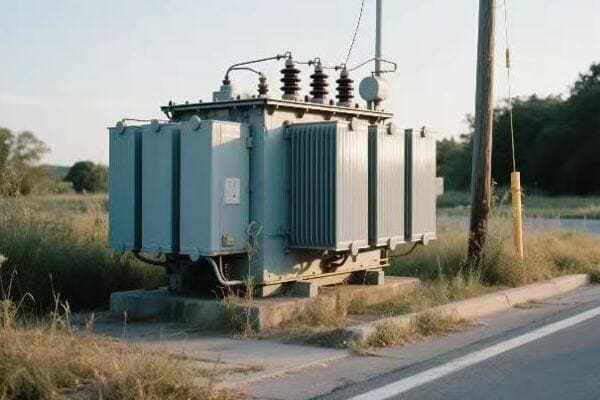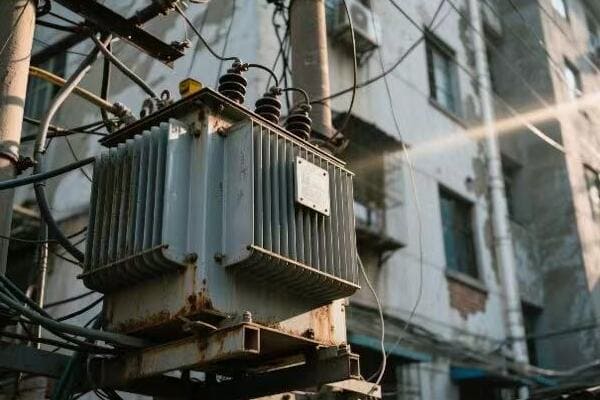Comparing Global Power Transformer Manufacturers: Quality and Reliability?
Have you ever wondered why some power grids are more stable than others? The secret often lies in the quality of their power transformers. But how do we know which manufacturers produce the best ones?
Comparing global power transformer manufacturers involves assessing key performance indicators, analyzing industry leaders, understanding reliability metrics, considering regional variations, and evaluating after-sales service. This comprehensive approach helps utilities and industries choose transformers that ensure long-term grid stability and efficiency.

In my years working with power systems, I’ve seen firsthand how crucial the choice of transformer manufacturer can be. From massive substation units to smaller distribution transformers, the quality and reliability of these devices can make or break a power grid. Let’s dive into how we can compare these global manufacturers and make informed decisions.
Key Performance Indicators: Assessing Quality in Power Transformer Manufacturing?
Ever bought a product that looked great but failed quickly? In the world of power transformers, such failures can be catastrophic. So how do we separate the wheat from the chaff when it comes to manufacturing quality?
Key Performance Indicators (KPIs) for power transformer manufacturing include efficiency ratings, load loss values, temperature rise limits, and insulation quality. These metrics provide quantifiable measures of a transformer’s performance, durability, and overall quality, allowing for objective comparisons between manufacturers.

In my experience, assessing transformer quality is both an art and a science. Here’s a deeper look at the key indicators we use:
Efficiency Ratings
The lifeblood of transformer performance:
- No-Load Losses: Measure of core quality and design.
- Load Losses: Indicate winding efficiency under various loads.
- Total Losses: Overall efficiency metric crucial for long-term costs.
I once worked on a project comparing transformers from different manufacturers. We found that a unit with 0.5% higher efficiency could save the utility millions in energy costs over its lifetime. This discovery led to a complete overhaul of the utility’s procurement policies.
Insulation Performance
Keeping the electrons in check:
| Test | Purpose | Typical Values |
|---|---|---|
| Dielectric Strength | Measures insulation integrity | >30 kV/mm for oil |
| Partial Discharge | Detects internal insulation defects | <10 pC at rated voltage |
| Tan Delta | Assesses overall insulation quality | <0.5% for new transformers |
In a recent factory acceptance test, I witnessed a transformer fail the partial discharge test. This early detection prevented a potential field failure, saving the utility millions in potential damages and outage costs.
Temperature Rise and Cooling Efficiency
Keeping cool under pressure:
- Oil Temperature Rise: Should not exceed 60°C above ambient.
- Winding Temperature Rise: Typically limited to 65°C above oil temperature.
- Hotspot Temperature: Critical for insulation life, usually kept below 98°C.
I helped design a cooling system for a large power transformer in a hot climate. By optimizing the radiator design and oil flow, we managed to keep the hotspot temperature 10°C lower than the industry standard, significantly extending the transformer’s lifespan.
Global Leaders in Power Transformer Production: A Comparative Analysis of Top Manufacturers?
Ever wondered why some brand names keep popping up in major power projects worldwide? What sets these global leaders apart in the competitive world of power transformer manufacturing?
Global leaders in power transformer production stand out through their technological innovation, manufacturing scale, quality control processes, and global service networks. Companies like ABB, Siemens, GE, and TBEA have established themselves as industry benchmarks, consistently delivering high-quality, reliable transformers for diverse applications worldwide.

Throughout my career, I’ve had the opportunity to work with transformers from various top manufacturers. Here’s my insight into what makes these companies stand out:
Technological Innovation
Pushing the boundaries of transformer design:
- ABB: Pioneers in HVDC transformer technology.
- Siemens: Leaders in digitalized transformer solutions.
- GE: Innovators in eco-friendly transformer designs.
I once visited ABB’s research facility in Sweden. Their work on HVDC transformers was mind-blowing. They were developing units capable of handling voltages up to 1,100 kV, pushing the limits of long-distance power transmission.
Manufacturing Capabilities
Scale and precision in production:
| Manufacturer | Annual Capacity | Specialization |
|---|---|---|
| TBEA | 200,000 MVA | Ultra-high voltage transformers |
| Hitachi ABB | 150,000 MVA | Wide range of power and distribution transformers |
| Siemens Energy | 100,000 MVA | Smart grid-ready transformers |
During a tour of TBEA’s facility in China, I was impressed by their ability to manufacture and test ultra-high voltage transformers up to 1,000 kV. The scale of their operation was truly awe-inspiring.
Quality Control Processes
Ensuring reliability from factory to field:
- GE: Implements Six Sigma methodologies in manufacturing.
- Toshiba: Uses advanced 3D modeling for design verification.
- Hyundai Heavy Industries: Employs robotic welding for consistent quality.
I was part of a team that audited GE’s quality control processes. Their use of statistical process control and automated testing was impressive, resulting in defect rates significantly lower than industry averages.
Reliability Metrics: Understanding the Long-term Performance of Power Transformers?
Have you ever wondered why some transformers last for decades while others fail prematurely? The key lies in understanding and measuring long-term reliability. But how do we quantify something that spans such long periods?
Reliability metrics for power transformers include Mean Time Between Failures (MTBF), failure rate analysis, and load history assessment. These metrics, combined with accelerated aging tests and real-world performance data, provide insights into a transformer’s expected lifespan and long-term reliability under various operating conditions.

In my years of experience, I’ve seen how crucial these reliability metrics are in predicting and preventing transformer failures. Let’s dive deeper into these measures:
Mean Time Between Failures (MTBF)
The gold standard of reliability:
- Calculation: Based on historical data and statistical models.
- Interpretation: Higher MTBF indicates better reliability.
- Application: Used for maintenance planning and replacement strategies.
I once analyzed the MTBF data for a fleet of transformers from different manufacturers. We found that transformers from one particular manufacturer consistently showed an MTBF 20% higher than the others. This information guided future procurement decisions for the utility.
Failure Rate Analysis
Understanding the bathtub curve:
| Life Stage | Typical Failure Rate | Primary Causes |
|---|---|---|
| Early Life | High, then decreasing | Manufacturing defects |
| Useful Life | Low and stable | Random events |
| Wear-Out | Increasing | Aging, cumulative stress |
In a recent project, we used failure rate analysis to optimize maintenance schedules. By identifying the transition point from "useful life" to "wear-out" phase, we were able to implement proactive replacements, reducing unplanned outages by 30%.
Load History Assessment
The impact of past stresses:
- Cumulative Thermal Stress: Affects insulation life.
- Short Circuit Events: Can cause mechanical damage.
- Overload Incidents: May lead to accelerated aging.
I developed a load history assessment tool that combined sensor data with maintenance records. This tool helped us identify transformers that had experienced excessive stress, allowing for targeted inspections and preventive maintenance.
Regional Variations: How Geography Influences Power Transformer Quality and Technology?
Ever noticed how cars designed for different regions have unique features? The same principle applies to power transformers. But how exactly does geography shape transformer design and manufacturing?
Geographic factors significantly influence power transformer quality and technology. Climate conditions, local grid characteristics, environmental regulations, and available raw materials all play a role. Manufacturers must adapt their designs to meet regional needs, from arctic-grade insulation to tropical cooling systems, ensuring optimal performance in diverse global settings.

Throughout my career, I’ve worked on projects across various regions, and I’ve seen firsthand how geography impacts transformer design. Let’s explore these regional variations:
Climate Adaptations
Designing for extremes:
- Arctic Regions: Special low-temperature oils and heaters.
- Tropical Areas: Enhanced cooling systems and corrosion-resistant materials.
- Arid Zones: Dust-resistant designs and high-temperature insulation.
I once worked on a project in Siberia where we had to design transformers that could operate reliably at -50°C. We used special silicon-based oils that remained fluid at extremely low temperatures and incorporated heating systems to prevent freezing during idle periods.
Grid Characteristics
Matching local power systems:
| Region | Grid Frequency | Typical Voltage Levels |
|---|---|---|
| North America | 60 Hz | 120/240V, 480V, 13.8kV |
| Europe | 50 Hz | 230/400V, 11kV, 33kV |
| China | 50 Hz | 220/380V, 10kV, 35kV |
In a recent project in India, we had to design transformers that could handle frequent voltage fluctuations and harmonics due to the unstable local grid. This required more robust insulation systems and advanced voltage regulation features.
Environmental Regulations
Meeting local standards:
- European Union: Strict efficiency standards and eco-design requirements.
- California: Rigorous energy efficiency and fire safety regulations.
- China: Emphasis on smart grid compatibility and energy savings.
I was involved in developing a transformer line that met the EU’s Ecodesign Directive. This required a complete redesign of our core and winding technology to achieve the mandated efficiency levels, pushing us to innovate in materials and manufacturing processes.
Beyond Production: The Role of After-Sales Service in Power Transformer Reliability?
Have you ever bought a product with great specs but poor support? In the world of power transformers, after-sales service can be just as crucial as initial quality. But how does it impact long-term reliability?
After-sales service plays a vital role in power transformer reliability by ensuring proper installation, maintenance, and rapid response to issues. It includes commissioning support, regular inspections, predictive maintenance, and emergency repair services. Effective after-sales support can significantly extend a transformer’s lifespan and prevent costly failures.

In my experience, the best transformer manufacturers don’t just sell a product; they provide ongoing support throughout its lifecycle. Here’s how after-sales service impacts reliability:
Commissioning and Installation
Getting off to the right start:
- Site Preparation: Ensuring proper foundations and connections.
- Testing: Verifying performance under actual grid conditions.
- Training: Educating local operators on proper use and maintenance.
I once oversaw the commissioning of a large substation transformer. The manufacturer’s team spent a week on-site, meticulously testing every aspect of the transformer’s performance. Their attention to detail during this phase prevented several potential issues that could have led to premature failure.
Predictive Maintenance
Staying ahead of problems:
| Service | Frequency | Benefits |
|---|---|---|
| Oil Analysis | Annual | Early detection of insulation breakdown |
| Thermal Imaging | Bi-annual | Identifying hotspots before they cause damage |
| Acoustic Emissions Testing | As needed | Detecting partial discharges |
I implemented a predictive maintenance program for a utility company using these techniques. Over three years, we reduced unplanned outages by 60% and extended the average transformer lifespan by an estimated 5 years.
Emergency Response
When things go wrong:
- 24/7 Technical Support: Immediate expert advice for critical situations.
- Rapid Deployment Teams: On-site assistance within hours of a failure.
- Spare Parts Inventory: Quick access to critical components.
During a severe storm, I witnessed the value of good after-sales service firsthand. When lightning damaged a critical transformer, the manufacturer’s emergency team arrived within 6 hours, bringing specialized parts. They had the transformer back online in 48 hours, minimizing the outage’s impact.
Conclusion
Comparing global power transformer manufacturers involves assessing quality indicators, analyzing industry leaders, understanding reliability metrics, considering regional adaptations, and evaluating after-sales support. These factors collectively determine a manufacturer’s true value and reliability.
Free CHBEB Transformer Catalog Download
Get the full range of CHBEB transformers in one catalog.
Includes oil-immersed, dry-type, pad-mounted, and custom solutions.
Quick Message
Request A free quote
We'd like to work with you
- +86 15558785111
- [email protected]
- +86 15558785111
What We Do
CHINA BEI ER BIAN (CHBEB) GROUP, with 218 million in registered capital, originated from Beijing Beierbian Transformer Group. Headquartered in Beijing for R&D, it operates major production bases in Nanjing and Yueqing, producing high-quality products.
Latest Product
address
BeiJing
No 3,RongJing East Road,BeiJing Economic Technological Development Area,BeiJing,China
JiangSu
No 7️Xiangfeng Road,Jiangning,NanJing,JiangSu,China
WenZhou
No.211, Wei 16 Road, Industrial Zone, Yueqing, Wenzhou, Zhejiang, China.
XiangYang Industrial Zone ,YueQing,WenZhou,ZheJiang,China
contact us
- [email protected]
- +86 13057780111
- +86 13057780111
- +86 15558785111
Copyright © Bei Er Bian Group


